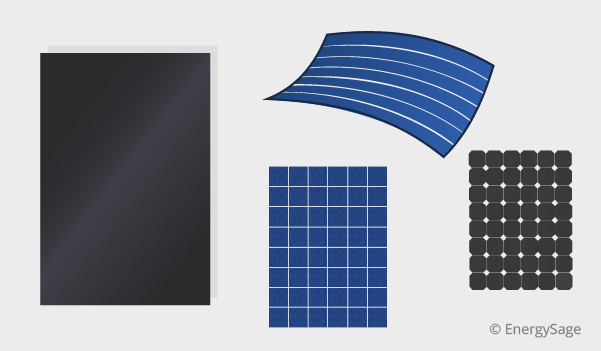Solar Systems Fundamentals Explained
Table of ContentsExcitement About Solar SystemsSolar Systems Fundamentals ExplainedExamine This Report about Solar SystemsAll about Solar Systems
There are 3 various kinds of photovoltaic panels: monocrystalline, polycrystalline, and also slim movie. Monocrystalline photovoltaic panels are very reliable and also have a sleek style, however come with a higher price point than other solar panels. Polycrystalline solar panels are less costly than monocrystalline panels, nevertheless, they are much less efficient and aren't as visually pleasing.Nowadays, there are a number of ranges of monocrystalline photovoltaic panels on the marketplace to pick from. Passivated Emitter and also Rear Get in touch with cells, more frequently referred to as PERC cells, are ending up being a progressively preferred monocrystalline alternative. PERC cells experience a various manufacturing and assembly process that enhances the amount of electrical power the cells can create.
Since monocrystalline solar cells are made from a solitary crystal of silicon, electrons are able to easily move throughout the cell, boosting total efficiency. Not just do monocrystalline panels have the greatest efficiency rankings, they usually also have the highest power ability scores, too. Many monocrystalline panels on the marketplace today will have a power output ranking of a minimum of 320 watts, yet can increase to around 375 watts or greater!.
Since polycrystalline cells contain several silicon cells, the electrons can stagnate as quickly and also therefore, reduce the efficiency of the panel. The lower performance of polycrystalline panels also suggests they tend to have a reduced power result than monocrystalline panels, usually varying between 240 watts as well as 300 watts.
The Solar Systems Diaries
In order to meet your energy requires, you would certainly require to install more slim movie panels over a huge location to create the very same quantity of electricity as crystalline silicon solar panels. This is why thin movie solar panels do not really make sense for residential installations where space is restricted.
The temperature coefficient tells you how a lot the power result will reduce by for each 1 * C over 25 * C the panel gets. The conventional temperature coefficient for mono and polycrystalline panels typically drops somewhere in between -0. 3% and -0. 5% per * C. Thin film panels on the other hand, are around -0.
As a matter of fact, with some slim film panels, it's tough to also see the specific cells within the panel. They also often tend to have less circuitry as well as busbars, meaning there's less white room. Nonetheless, due to the fact that they are so inefficient, you would certainly require to cover your entire roof covering in thin movie panels - which may or might not be your design.

Some manufacturers have functioned around this with black packaging or shaping the cells in different ways, but these aesthetic changes can influence both the rate and also efficiency of the panels. On the whole, monocrystalline panels still look sleek, but they're a bit extra obvious than thin film panels. solar systems. The process in which polycrystalline solar cells are made triggers find out here the cells to have a blue, marbled look.
Solar Systems for Beginners
If you're on a tight budget plan, polycrystalline panels could make more feeling for you. We do not recommend slim movie solar panels for property installations - their efficiency and also resilience do not make the reduced cost worth it, as well as it's unlikely you'll have nearly adequate space to set up the variety of slim movie panels you would need to cover your family electrical power use.
Considering that they are made from pure silicon, they can be readily determined by their dark black shade. The usage of pure silicon also makes monocrystalline panels one of the most space-efficient and longest-lasting among all 3 photovoltaic panel types. This comes at an expense a whole lot of silicon is lost to create one monocrystalline cell, occasionally reaching over 50%. solar systems.

Amorphous silicon panels (A-Si) derive their name from their shapeless nature. Unlike mono-and polycrystalline solar cells, the silicon is not structured on the molecular degree.
Solar Systems - An Overview
$0. 32-$0. 65 $1 $1. 50 $0. 70 $1 $0. 60 $0. 70 $0. 50 $0. 60 $0. 43 $0. 50 Note that these numbers do not consist of the price of installment and also labor. With labor and also various other above factors, the overall can rise to $2. 50 to $3. 50 per watt.
/types-of-solar-panels-pros-and-cons-5181546_finalcopy-93f1db65349840bdba2822f75fa592f9.jpg)
This indicates that thin-film panels can like this be an excellent option for hotter environments or places that experience more sunlight throughout the year. The updated International Building regulations of 2012 calls for photovoltaic panels to match the fire score of the roofing system where they are set up. This is to make certain that the components do not accelerate the spread of flames in case of a fire.